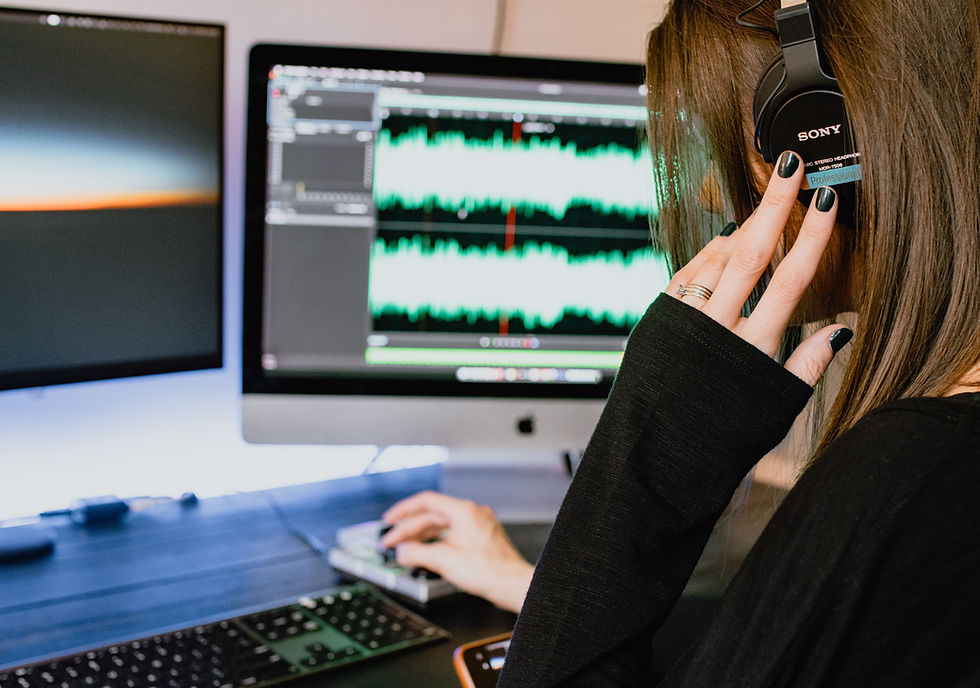Sound design is often the unsung hero in the realm of video editing. While visuals capture the audience's attention, it is the audio that truly immerses them in the experience. This blog will delve into the importance of sound design and provide tips for creating an immersive audio landscape that enhances your video content.

The Importance of Sound Design
Enhancing Emotional Impact
Sound design plays a crucial role in shaping the emotional response of the audience. Whether it's the subtle hum of a background score or the sharp crescendo of an action scene, sound can evoke feelings of joy, suspense, fear, and more. The right audio cues can amplify the narrative, making moments more poignant and memorable.
Creating a Sense of Space and Environment
Good sound design can transport viewers to different worlds. Through ambient sounds, Foley effects, and well-crafted audio layers, editors can create a convincing sense of space and environment. This helps in grounding the story, making the visuals more believable, and the overall experience more immersive.
Guiding Audience Attention
Sound can guide the audience’s focus to specific elements within the scene. By emphasizing certain sounds, such as a creaking door or a distant siren, editors can subtly direct viewers' attention, enhancing the storytelling. This technique is especially useful in horror or thriller genres, where suspense is key.
Improving Production Quality
Well-designed audio can elevate the perceived quality of a video. Poor sound design, on the other hand, can be jarring and distract from even the most beautifully shot footage. Investing time in sound design ensures a polished final product that reflects professionalism.

Tips for Creating an Immersive Audio Experience
Before diving into editing, have a clear plan for your sound design. Consider the mood, setting, and narrative arc of your video. Decide which sounds will be diegetic (originating from the scene) and which will be non-diegetic (external, such as background music or voiceovers).
Invest in high-quality sound effects and recordings. Poor quality audio can be distracting and break the immersion. There are many online libraries where you can find professional-grade sound effects to suit any scene.
An immersive audio experience often relies on multiple layers of sound. Ambient noises, dialogue, Foley effects, and music should be layered thoughtfully to create depth. Ensure each layer complements the others without overwhelming the primary audio focus, typically the dialogue or key sound effects.
Ambient sounds are crucial for creating a realistic environment. This could be the buzz of a city, the rustling of leaves, or the murmur of a crowd. These sounds should be subtle yet present, providing context and depth to the scene.
Music is a powerful tool in sound design but should be used judiciously. The right score can enhance the emotional impact of a scene, but it should not overshadow the dialogue or other important sounds. Choose music that aligns with the tone of your video and use it to accentuate key moments.
Foley is the art of creating sound effects that match the actions on screen. This can include footsteps, cloth rustling, or the clinking of glasses. Foley adds realism to the video, making interactions and movements feel authentic.
Sound mixing is where all your audio elements come together. Balance the levels of dialogue, sound effects, and music to ensure clarity and cohesiveness. Pay attention to the panning of sounds, which can create a three-dimensional audio space, further immersing the viewer.
Test your video on various playback devices, such as headphones, speakers, and mobile devices. This ensures your sound design holds up across different platforms and provides a consistent experience for all viewers.
Conclusion
Sound design is a critical component of video editing that significantly enhances the viewer's experience. By understanding its importance and implementing thoughtful audio strategies, you can create compelling and immersive videos. Remember, great sound design goes unnoticed because it seamlessly integrates with the visuals, making the whole greater than the sum of its parts. Invest time and effort into your sound design, and your audience will thank you for it.
By following these tips, you can ensure your videos not only look good but sound exceptional, providing a complete sensory experience that captivates your audience from start to finish.
Comments